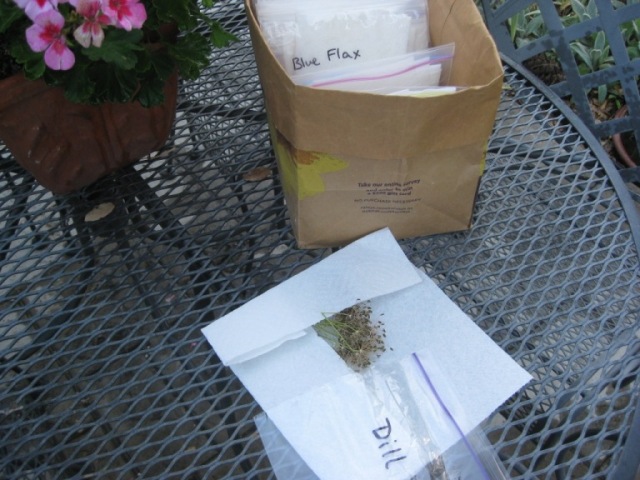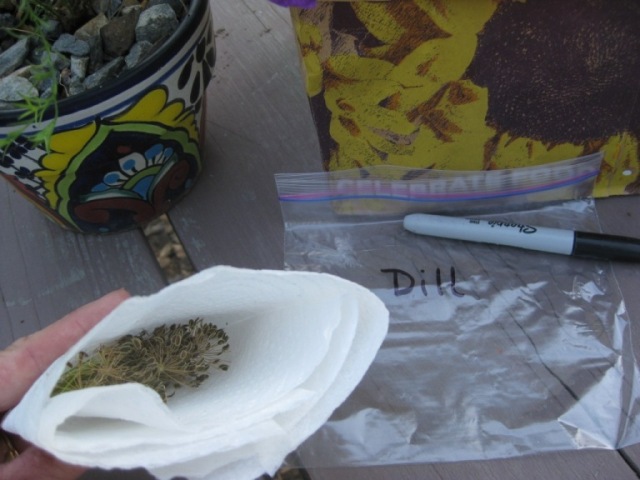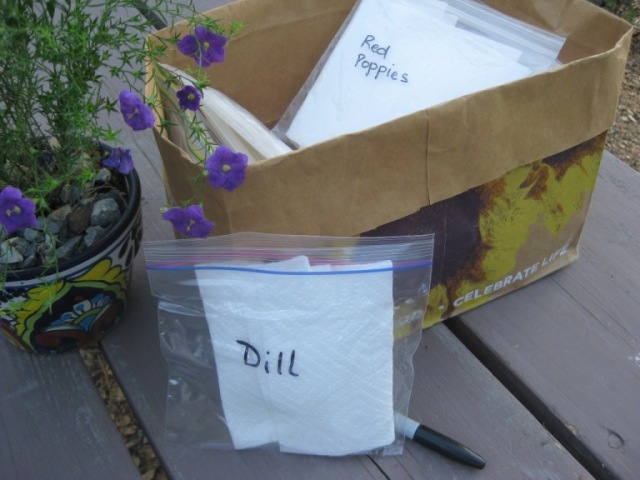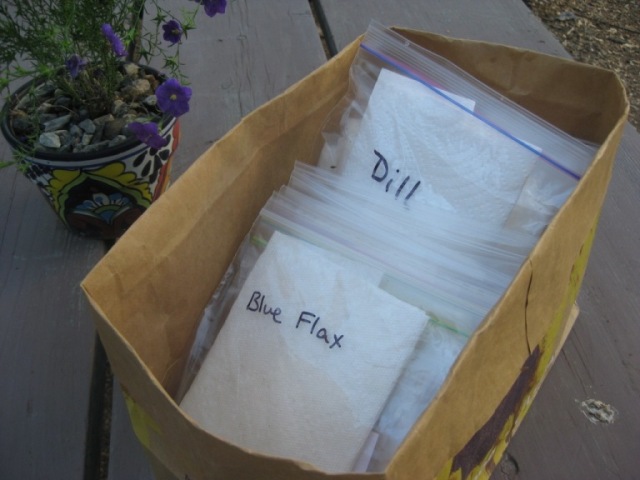In late summer, Nature has a way of reproducing each plant and all you have to do is take notice of how it’s done naturally.
Take a good look at your flowers and vegetable plants and notice that their seeds are developing. The seed pods start to swell and dry when the plant has achieved its goal of producing seeds for reproduction. The seed pods turn papery and brown. For complete maturity, you want to make sure the seeds are dried naturally as much as possible on the plant. For example, the stems of a Columbine dry about one inch below the seed pod when they are ready to harvest.
‘Gone to Seed’ is a good thing!
Snip off the dry seed heads with scissors, carefully, making sure the very seeds you want, don’t fall to the ground. Mother Nature has made it easy for the seeds to spread and if you pull them off sometimes you get a shower of seeds around you! Pinch Poppy seed pods tightly to keep them from popping apart before your eyes!
Collect the seeds pods in a plastic container. Here is where you sort the seed from the rest of the pod, called the chaff. You can collect an assortment of seeds in separate containers on an old cookie sheet or tray.
Next look for the actual seed and shake and sort it from the chaff. If you have trouble figuring out which is the actual seed, check out this neat seed ID website, The Seed Site. It shows the seed and the seedling for a huge number of plants.
Throw the chaff out to an area of the garden where you may want more of this kind of plant as there may be seeds hiding. Pour out the seeds into a paper towel and fold into a packet. This will allow the seeds to continue to dry. Place the packet inside a sandwich sized baggie, labeled with an indelible ink pen. Leave the tops open.
To store many envelopes, fold down the sides of a paper grocery bag or use a shoe box and keep iyour new seed file in a cool place. Some people have room in their refrigerators. You can reuse these materials over and over.
Seed saving is easy, economical and interesting. It’s fun to do with a child. You can also select those plants that have the most desirable characteristics and only save those seeds. In this way you become a plant scientist!
Resources
Here are some interesting websites about seed saving:
This extensive site is for vegetable seed savers especially.
Really Cool Links
Many people in California know and love Renee’s seeds for the variety and quality.
- Are you interested in the global issues surrounding seed saving? Look at this fascinating 6 minute video about the largest seed bank in the world located in England. Millennium Seed Bank





3 comments